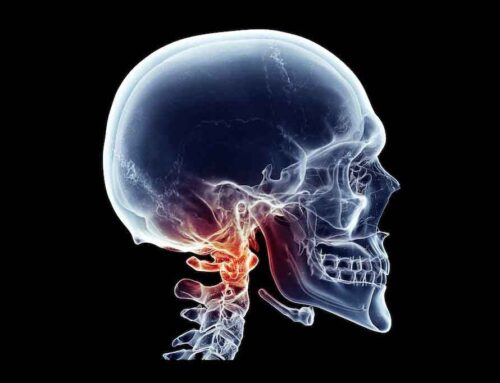A head injury can range from a bump or bruise to a traumatic brain injury.To prove this point. Recently we had a young gal come in for care. She bumped her head on her car door jam while getting in the car. For the neck 2 months she has had constant vertigo. Head injuries do not always have to be the result of a severe crash or trauma!
Head injuries include concussions, skull fractures, and car accidents and other minor impacts to the head. The consequences and treatments vary depending on the type of trauma and the injury inflicted.
Head injuries may be either open or closed. A closed head injury is any injury that does not break your skull. An open, or penetrating, head injury is one where something breaks your skull.It can be tough to assess how serious a head injury is just by looking. While some injuries do not bleed externally they may bleed internally (hematoma). It’s important to deal with all head injuries and get them assessed by a doctor and then a chiropractor. Later in this article we will discuss a little-known procedure called Blair Upper Cervical Chiropracticthat has helped people recover lost function following head injury.
What causes a head injury?
In general, head injuries can be divided into two categories based on what causes them. They could be head injuries due to blows to the head or head injuries due to rapid acceleration or deceleration of the head.
Head injuries brought on by a blow to the head are usually associated with:
- automobile accidents
- falls
- physical assaults
- sports-related accidents
In most cases, your skull will protect your brain from serious injury. However, injuries severe enough to cause head injury may be associated with injuries to the spine. Especially where the skull meets the neck, the atlas. Because the skull weighs 10-12 pounds and the atlas weighs 2 ounces this junction is the most vulnerable toinjury in the entire spine.
What are the significant types of head injuries?
A hematoma is a collection, or clotting, of blood outside the blood vessels. If a hematoma occurs in the brain, it can be very serious. The clotting can cause pressure to build inside your skull, which may cause you to lose consciousness. There can be bleeding in the space around your brain, which is a subarachnoid hemorrhage, or bleeding inside your brain tissue, which can be a hemorrhage. Intra-cerebral hemorrhages’ severity depends on how much bleeding there is, however, over time any amount of blood can cause pressure to build. The loss of function is temporary. Repeated concussions can eventually lead to permanent damage. Injuries cause swelling of the tissues, when it occurs in your brain it’s more serious. Your skull can not stretch to accommodate the swelling, which leads to a buildup of pressure in your brain. This can cause your brain to press against your skull. Once the medical crisis has been dealt with the best thing you can do to recover your health is see a Blair Upper Cervical Chiropractor.
Skull fracture
Unlike most bones in your body, your skull does not have bone marrow. This is by design and makes the skull very strong. A skull that is broken indicates that it was unable to absorb the impact of the blow. This can cause brain injury. Diffuse axonal injury is one of the most dangerous types of head injuries and can lead to brain damage and even death even though it isn’t as outwardly visible as other types of brain injury.
What are the symptoms of a head injury?
But, not all head injuries cause bleeding. It’s essential to be aware of other symptoms that can indicate head injury even though no outward signs are present. Many indicators of serious brain injury won’t appear straight away. You should always continue to observe your symptoms after you injure your head. Also once you have determined that you have no life threatening effects it is essential that you get to an upper cervical chiropractor who can correct and neck injury that can cause long term health problems by interfering with the central nerve system.
Common symptoms of a slight head injury include:
- a headache
- lightheadedness
- a spinning sensation-vertigo
- mild confusion
- nausea
- temporary ringing in the ears
The symptoms of a severe head injury include lots of the symptoms of minor head injuries. They can also include:
- a loss of consciousness
- Infection
- nausea
- balance or coordination problems
- severe disorientation
- an inability to focus the eyes
- abnormal eye movements
- a loss of muscular control
- a persistent or worsening headache
- memory loss
- changes in mood
- leaking of clear fluid in the ear or the nose
When does a head injury require medical attention?
Head injuries shouldn’t be dismissed. See your physician right away if you think you have the symptoms of a severe head injury. Once you have been cleared of any life-threatening injury you should seek Blair Upper Cervical Care. Upper cervical Doctors are trained to correct spinal misalignment at the skull neck junction, called cranio-cervical junction (ccj). Correcting this spinal problem will ensure that your spinal cord and brain-stem will function normally and health problems will not develop down the road.
How is a head injury diagnosed?
TheGCSis a 15-point test that assesses your mental status. A severe injury is indicated by a GCS score that is above a certain number known by your doctor. Your doctor will need to know the conditions of your injury. Frequently, if you’ve had a head injury, you won’t recall the details of the collision. You should bring someone with you who witnessed the collision, when it’s possible.
Your doctor will also examine you to look for signs of injury, including swelling and bruising. You’re also likely to get a neurological examination, in which your doctor will evaluate your nerve function by assessing your muscle control and strength, eye movement, and feeling.
Imaging tests are generally used to diagnose head injuries. A CT scan will help your doctor look for fractures, evidence of any structural damage and clotting, brain and bleeding. CT scans are accurate and fast, so they’re typically used. You may also receive an MRI scan, which can offer a view of the brain. Once you are in stable condition, an MRI scan will usually be ordered.
You Are Stable-Now What? Blair Upper Cervical Chiropractic
Unfortunately, the majority that suffer from a head injury do not seek upper cervical chiropractic care. This is the result of a lack of awareness. Injuries to the head also simultaneously cause neck injury. Neck injury can lead to long term chronic symptoms that do not self-correct. A trained upper cervical chiropractor should be your next stop after you have been cleared of life threatening injury. We will explain exactly what a Blair Upper Cervical Chiropractor does and how it can help you recover your health following a head injury.
Blair Upper Cervical is a unique chiropractic procedure who focuses its attention on the skull-neck junction. Blair Upper Cervical Chiropractic is tailored to help those with post-traumatic brain injuries. The goal of Blair Upper Cervical is to determine whether the upper four bones in the neck are aligned or misaligned. Once determined there is a spinal problem, precise joint (articular) x-rays are taken to determine direction of misalignment and joint angle. Once these factors are worked out they are used in a precise, gentle, correction to restore joint motion and normal neurology. When the neck joints are in motion the central nervous system can function better. Better function means better healing. The patient is monitored over time to determine whether a spinal correction is needed or not. While the correction is in its normal position healing occurs. We have an old saying in upper cervical work- Nature Needs No Help Just No Interference.
We hope that this article has been helpful and helps those in need. If you are interested in having a FREE consultation in our Los Angeles or Carson office you can call 310 324-6172 for Carson office or 213 399-772 for our Los Angeles office. We hope to see you soon.
“Upper Cervical practitioners hypothesize based on their success in addressing many health conditions that the misalignment of the atlas is blocking communication to various parts of the body and thereby affecting the body’s own ability to correct the problem. “



